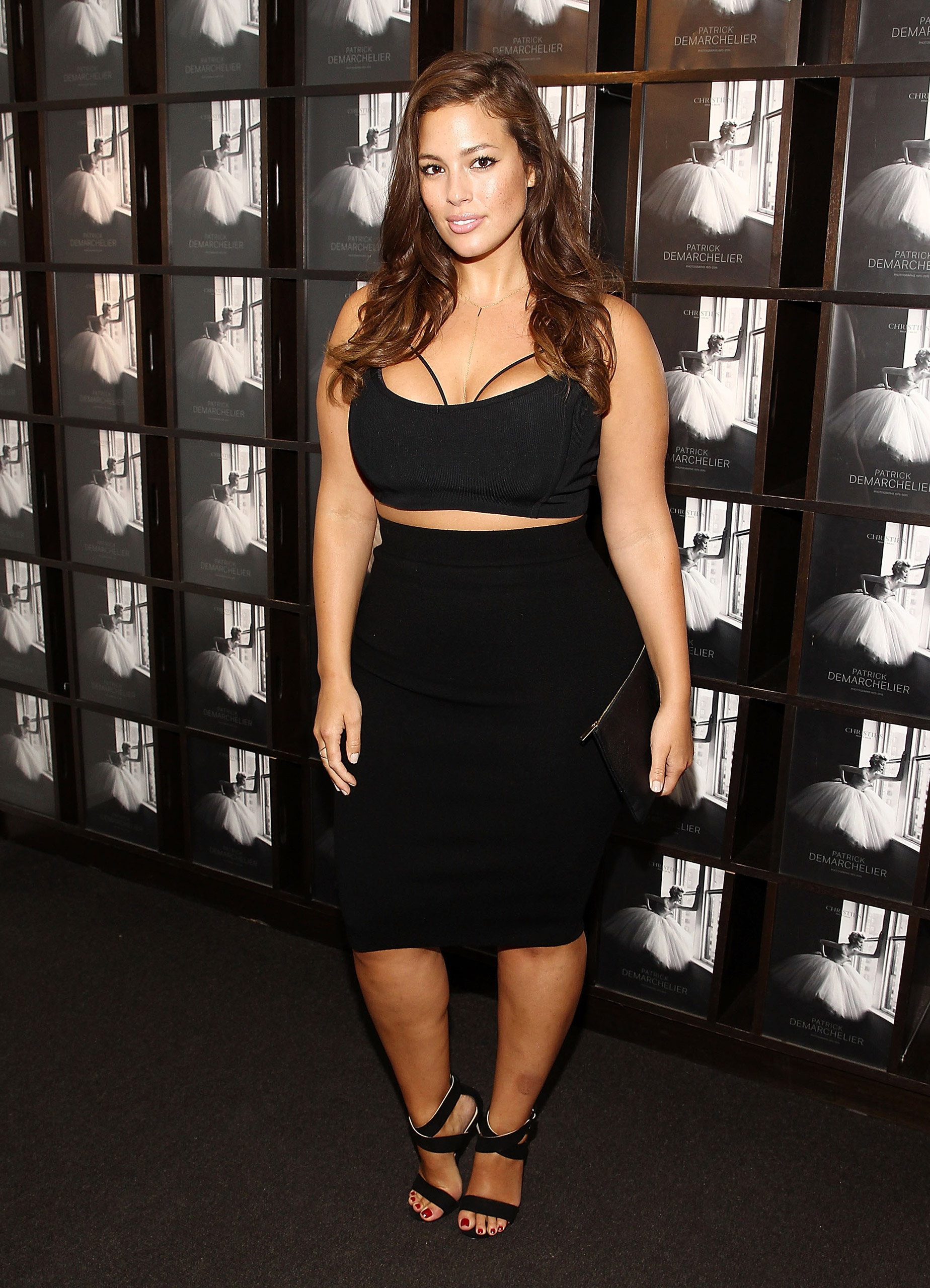
Ashley Graham isn’t your typical model — in fact, she’s working hard to make sure you can’t define what ‘typical model’ means. “I really want to put some actual thick curves on the runway,” she says.
The body positive activist is showing her own line of lingerie, which she designed with Addition Elle, in a Sept. 15 runway show at New York Fashion Week that will stray from what many have accepted as the norm by featuring curvier models.
The model has long been an advocate for women of all shapes and sizes. Graham says she doesn’t get mad if people call her a “plus-size” model,” but she will roll her eyes. She prefers something a little more flattering: “There are so many adjectives that you could [use to] describe my body, but the one I love is curvy,” she says, laughing over the phone in between appointments leading up to NYFW.
After appearing in a much-discussed Lane Bryant lingerie commercial in 2010 at age 22, Graham was thrust into the spotlight. She’s been featured on billboards in Times Square, in the pages of Vogue and as one of the first curvier models in the Sports Illustrated Swimsuit Issue. She’s also put herself forth as an activist, giving a TedX Talk about how the term “plus size” makes her feel like an outsider in the fashion world.
Her presence and overall message is especially important in the fashion industry, where super toned supermodels constantly appear on social media and magazine covers and in movies and music videos.
People might not be letting go of the phrase “plus size” anytime soon, so Graham aims to change the conversation. She’s the face of a new generation of models, designers and celebrities who are rejecting the so-called skinny ideals and encouraging the public to embrace all kinds of women.
Next up? Conquering New York Fashion Week. A handful of designers, like Chromat and Zana Bayne, have included models with curvier frames on the their runways, but they’re few and far between. Graham wants to take that a step further by designing the collection and walking in the show.
“Every woman in the show has a completely different shape and we wanted to show diversity of shape and ethnicity and that’s what curvy women are,” she says. “We are all shaped so differently, we are all different ethnicities.”
Denise Bidot, a Puerto Rican/Kuwaiti model, who opened the Chromat Show in 2014, told Elle that she felt the 2014 fashion week set the bar high. “Finally, it was exactly what we’ve been begging the industry to do, which is just to stay a part of it.”
But Graham doesn’t think it’s changing fast enough.
“If we have more people talking about what media has told us is bad, like cellulite and rolls, then more people are going to love the skin they’re in,” Graham says. “Between ads like ‘this is the perfect body’ or you’re seeing the ‘skinny salad’ or jeans that tell you how to get the perfect butt, the media is still brainwashing.”
Graham isn’t alone. Actress Melissa McCarthy, who said designers wouldn’t dress her for the Oscars because of her size, launched her own clothing line for women of all sizes, Melissa McCarthy Seven7 earlier this year. It’s now sold on HSN.com, where more than 1,400 jeans were sold in the first two hours it launched.
“I just think, if you’re going to make women’s clothing, make women’s clothing. Designers that put everyone in categories are over-complicating something that should be easy,” she told Refinery29.
Graham notes that designers typically use samples made for size zero or two on the runway, so it takes more work to make something specific and special for a curvy model. Meaningful change won’t happen at NYFW unless designers adjust their process first.
“It was not inclusive for a girl like me,” she says. “I think now things are really changing.”
More Must-Reads from TIME
- Introducing the 2024 TIME100 Next
- The Reinvention of J.D. Vance
- How to Survive Election Season Without Losing Your Mind
- Welcome to the Golden Age of Scams
- Did the Pandemic Break Our Brains?
- The Many Lives of Jack Antonoff
- 33 True Crime Documentaries That Shaped the Genre
- Why Gut Health Issues Are More Common in Women
Contact us at letters@time.com